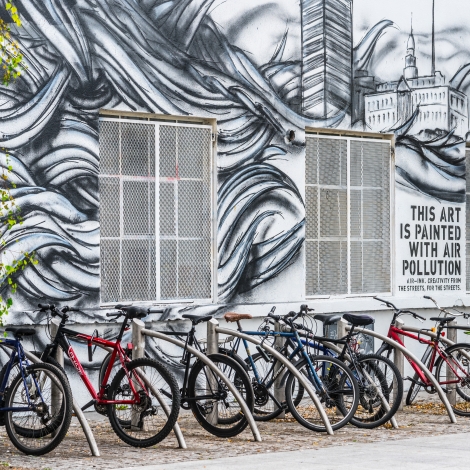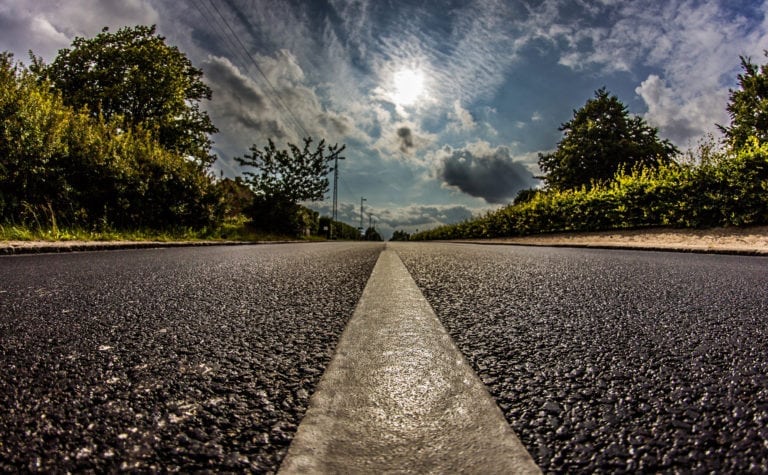E4C Fellow Arijit Goswami revisits a creative carbon-capture startup that proposes to convert tailpipe exhaust into ink and sell it as pens for artists.
The market rollout of ink made from upcycled carbon emissions in cities in the United States and India highlights opportunities that lie in the carbon capture market. Research by US Environment Protection Agency (EPA) shows that a typical passenger vehicle emits about 4.6 metric tons of carbon dioxide per year. That comes down to about 404 grams of CO2 per mile. Bengaluru-based Graviky Lab’s AIR-INK comes as a promising solution to capture vehicular carbon emissions and put them to use.
Related: A Hardware Entrepreneur in Delhi Turns Soot into Art with a Boost from E4C
Founded by Anirudh Sharma, a graduate of Massachusetts Institute of Technology in Boston (USA), Graviky produces AIR-INK, made from upcycled vehicle exhaust. The product is used in carbon-negative printing and production. Mr. Sharma first conceptualized AIR-INK while designing a printer that could use carbon nanoparticles. Following three years of research, Anirudh and his team landed a meticulous understanding of how carbon soot from vehicles and factories could be repurposed. In 2013, the Fluid Interfaces research group at MIT demonstrated the process of converting carbon residue into ink for use in an inkjet, which was a precursor to the AIR-INK markers sold by the company now. Each AIR-INK marker is made out of 40-50 minutes’ worth of material car pollution and replaces the need for a conventional black marker. For producing the same amount of ink through conventional methods, the carbon will have to be produced by deliberately burning fossil fuels. The conventional methods for marker production, therefore, are carbon-positive processes that add pollutants to the air.
Graviky Labs solves this problem through a 3-step process. The first step involves capturing soot from vehicle emissions using a proprietary device called KAALINK that does affect performance, the Graviky team says. The device is retrofitted to the exhaust pipe of vehicles using a clamp fitting, for capturing the outgoing pollutants. The mild steel filter has numerous holes, through which the exhaust passes, following which a layer of carbon soot particles is formed in the holes. A cleaning process collects the carbon soot particles. A rubber fitting traps the soot to prevent its escape. The diameter of the filter pipe which is to be fitted to the exhaust pipe can be adjusted to fit different tailpipe sizes.
Every 45 minutes worth of emissions produces 30ml of ink to fill one marker pen.
Next, the soot captured by KAALINK undergoes various proprietary processes for removal of heavy metals and carcinogens. It includes, among other steps, mixing of the ‘carbon black’ with a polymer and a solvent, which turns it into a smooth, flowing black rollerball ink. The Graviky team uses a variety of hydrocarbons, esters, alcohols, ketones and ethers as solvent for the inks. The result is a purified carbon rich pigment. In the final step, the carbon is used to make various types of ink and paints. The entire end-to-end process is enabled by collaboration with third parties at every step.
Every 45 minutes worth of emissions produces 30ml of ink to fill one marker pen.
There are several types of AIR-INK pens: a 2mm round tip, 15mm, 30mm and 50mm chisel tip markers, along with a 150ml screen printing ink. The company also plans to roll out oil-based paints, fabric paints, outdoor paints and other ink-based products soon into the market.
Though AIR-INK may be a foreign concept to consumers, Graviky’s goal is to slowly mainstream it as an eco-friendly innovation. Just as industries have adopted recycled paper and recycled plastic, the company hopes to see its target audience adopt AIR-INK as a recycled product.
“It is the job of the early adopters who push an alien idea forward” Anirudh said in a statement.
The company has also partnered with creatives and designers around the world to create pieces of art. The art work is intended to raise awareness. In 2016, the company gave AIR-INK products to graphic artists in Hong Kong, as the region is known for its high air pollution. Artists painted murals using AIR-INK in work made possible through a partnership with the Singapore-based brewery Tiger Beer.
AIR-INK has also been developing its supply chain. The United States has regulations for companies to dispose of carbon particulates responsibly. However, India has much more relaxed regulations and waste builds up quite swiftly at small and medium-sized businesses. Since waste disposal is quite expensive, these companies end up dumping the waste into rivers and landfills. Graviky Labs put out a call out to the area factories to give away their carbon particulates. Soon, polluting industries were contacting Graviky Labs to collect their waste.
AIR-INK has been retailed only in New York so far because of the early adopter community available there. The company is still finding ways to reduce prices for increasing adoption.
Graviky Labs is making steady progress with its AIR-INK product and is trying to increase traction among its consumers in the market. Such innovations need further investment and mentoring for making the technology accessible, feasible and understandable to its consumers.
About the Author
Arijit Goswami was an E4C Fellow in 2022 who works at the intersection of technology, business strategy and social policy, wherein he devises use cases demonstrating how technology can drive social transformation.

